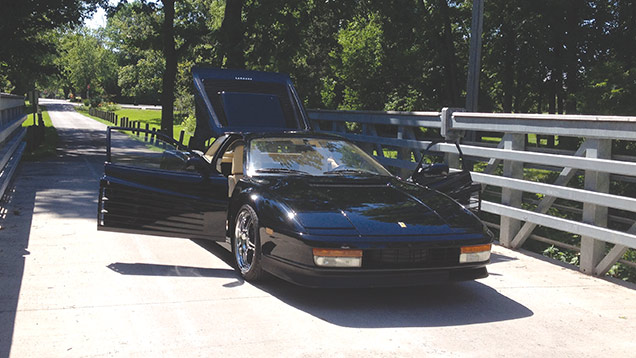Motoring: A look back in time
 CREDIT: NAUMAN FAROOQ
CREDIT: NAUMAN FAROOQOur resident car expert test-drove something from the past.
The Ferrari Testarossa was the second-most popular poster car in the 1980’s, right behind the Lamborghini Countach. One of its debuts was being the cover model of the October 1986 issue of Automobile Magazine; not only the first car magazine I ever read, but also the one that commenced my love of this car.
The magazine glorified the 12-cylinder, mid-engine, supercar and commenced my addiction to the Testarossa’s Pininfarina penned styling – with the wide hips at the rear, and the strakes on the sides it was easily comparable to a UFO on wheels.
With its 4.9L, flat-12 motor, the Testarossa was capable of sprinting from zero to 100 km/h in just 5.3 seconds and had the capability of reaching 290 km/h.
Though this mind-blowing beauty could stop anyone in his or her tracks, it was not easily attainable as its price tag was approximately $200,000.
Despite the price, the wealthy car enthusiasts around the world flocked to buy the Testarossa, with a total of 7,177 units made between 1984 and 1991. It was followed by the improved 512TR, produced between 1991 and 1994, with 2,261 units made. It was also followed by the F512M, the last of this breed, made between 1994 and 1996, with just 501 units made.
I have been dreaming about driving a Testarossa for most of my life, but given its collector car status, I feared I would never get the chance to test it.
That fear was stifled as I had a chance conversation with Anthony Foderaro of Peninsula Imports. After our conversation, he took the Testarossa out of the showrooms collection and offered me to take it out for a drive.
As this 1988 example of the Testarossa sat on the tarmac outside the showroom, I was beside myself and could not believe that I was about to drive my fantasy car.
As I buckled myself in, I remembered all I’ve read about these cars, mainly that they are difficult to drive. My nerves were quickly diminished as I put the car into first gear and gently let out the clutch, the car moving forward with no fuss.
On the road, I was surprised at how quickly I felt comfortable. I did not find the offset pedals difficult to function – they are pushed to the right due to the intrusion of the front wheel – or the reach and angle of the fixed steering wheel to be a bother.
Most of all, I loved the heavy yet precise gearbox and the car’s power delivery.
The acceleration was both linear and violent; it was quite apparent that this car was designed to go fast, and it still plays that role well.
The steering is fairly direct, lacks any assistance, and, despite a bit of play on centre, it is quite communicative, making it easy to maneuver.
There are many contenders for what I enjoyed most about this experience, but I think it’s the noise that flat-12 makes when you press on the gas pedal. It sounds authentic and finely tuned producing a pure, mechanical symphony.
However, old cars are not perfect. They require more maintenance to keep them going, their cooling systems are no match for today’s systems, and parts are expensive and difficult to come by.
Though, given the rate at which cars like the Testarossa are appreciating, all the hassle is well worth it. It is said that in the next 10 or 15 years, cars like these will be worth nearly $1 million. So as an investment, it cannot be beaten.
The car I drove is currently not for sale, but can be viewed by anyone who visits Peninsula Imports.
There is an old saying that goes, “Never meet your heroes.” It suggests that to meet with someone or something you’ve held at a pedestal will likely end up in disappointment. I had feared that my time in a Testarossa would result in the same fashion.
Luckily, it was the opposite: it turned out to be even better than I had expected.














